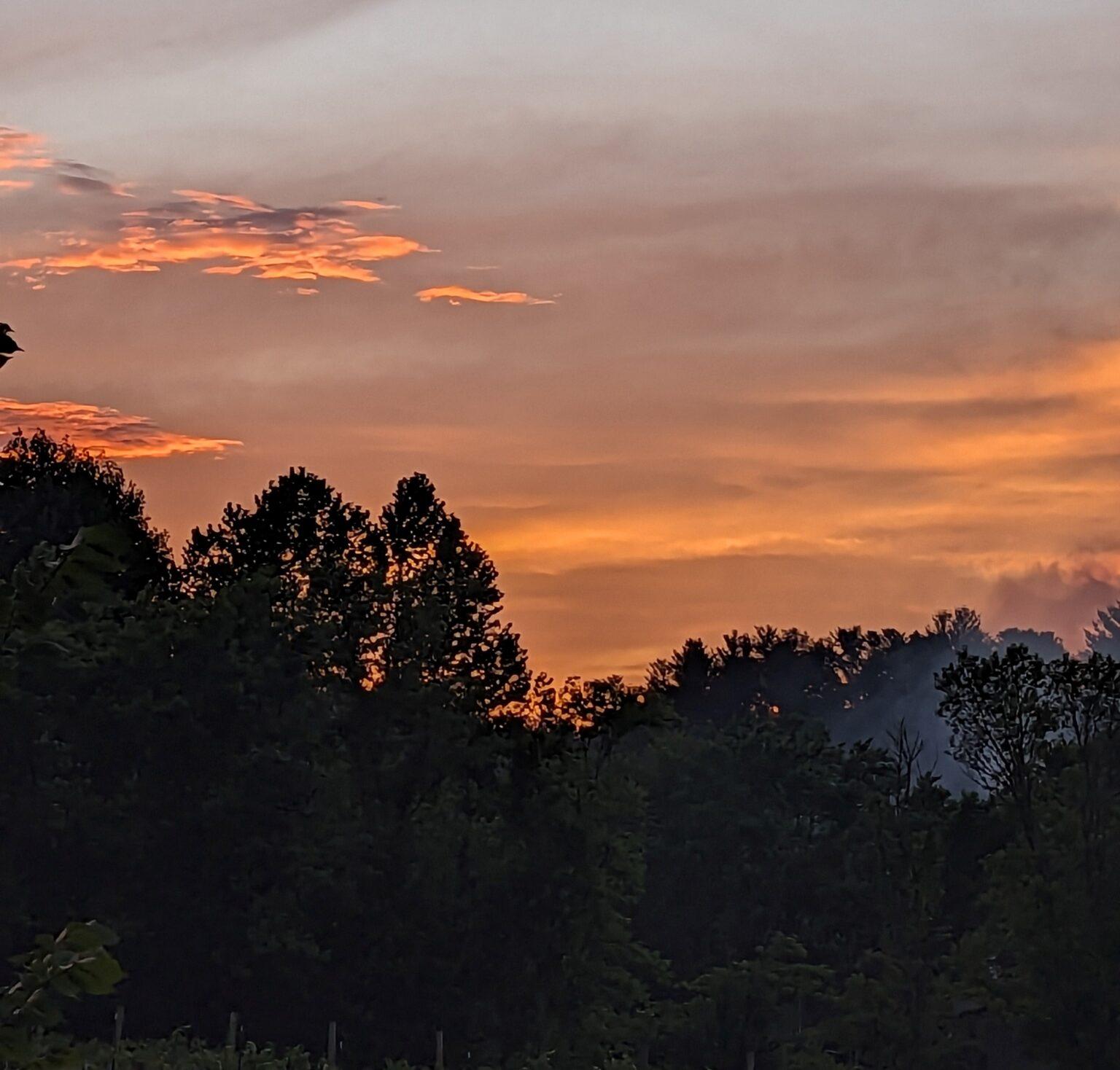“The severe winter of 1737 and the drought over the previous months had left the…box hedges that bordered the flower beds looking brown and parched. Even though…three had watered the plants every evening and built arbors to create shade, many…plants had been damaged, leaving the garden stripped. [O]ur poor country grows more unseasonably yearly.” –John Custis to John Bartram
“The colonial climate was volatile—some winter days being very warm and then, as Bartram explained to Collinson, ‘in a few hours most cold’, and the summers were hotter and drier than in England.” –Andrea Wulf, author of The Brother Gardeners
The weather has become more unpredictable. It’s not whether it will, rather it’s what form will weather take? This article is about the vagaries of weather and the techniques and practices to employ to make plants more resilient.
The differing types of weather that can adversely affect your plants include:
- Not enough rain (drought)
- Too much rain (deluge)
- Ponding water (flood)
- High temperatures (extreme heat)
- Low temperatures (extreme cold)
- High winds
- Fog
The growth and health of plants is not independent, rather it is quite dependent upon climate and weather. Like the Goldilocks Conceptual Framework (“The Story of the Three Bears”, Robert Southey, 1837), some basics are required in just the right amounts. These basics are:
- Soil
- Moisture
- Minerals
- Air
- Sunlight
- Drainage
Whether it Rains or Not
“One day it started raining, and it didn’t quit for four months. We been through every kind of rain there is. Little bitty stingin’ rain… and big ol’ fat rain.” – Forrest Gump.
The essential aspect of rain to favor plant development is dose. That is, how much it rains and the rate at which it falls. Plants typically require an inch of water per week (a particularly good rule of thumb, if your thumb is one inch). A slow, steady rain tends to soak into the earth. Fast, hard rains tend to wash away, and have little plant value.
How do you know that a rain event has been adequate to thoroughly soak the root zone? Here is one method: (1) use a rain gauge, and record how much rain fell, and (2) excavate a hole at least a foot deep in your planting bed and measure (or feel for) the depth of wetness. Excavate into the soil 3 days after a rain. The depth at which the soil is moist is called field capacity.
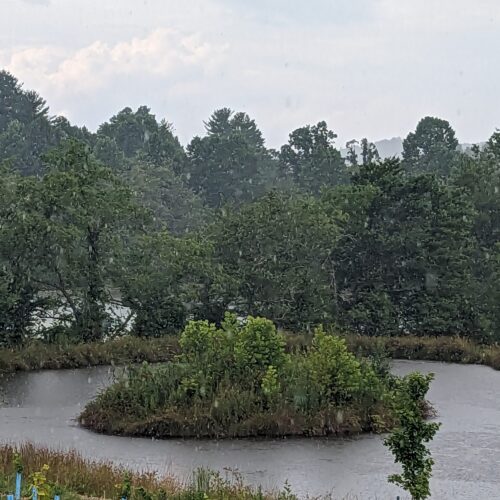
Three Basic Soil Environments
When we think of plant types, we often think of temperate or tropical zones, but within climatic zone, plants have evolved to live in particular habitats. The three basic soil environments include:
- Xeric (dry)
- Hydric (wet)
- Mesic (moist, well drained)
Xeric environments tend to experience evaporation from the soil surface that exceeds precipitation, whereas mesic environments tend to experience precipitation events that exceed evaporation.
Examples of plants that are adapted to xeric conditions include succulents and cacti. This group of plants actually benefit from a form of benign neglect when it comes to watering. These will fail if soils are consistently wet or poorly drained.
Examples of plants that are adapted to hydric conditions are the bald cypress (Taxodium distichum), pumpkin ash (Fraxinus profunda), black ash (F. nigra), and sourwood (Nyssa sylvatica). Some trees that prefer hydric soils will do well in mesic conditions, but may struggle in drought.
Most of the plants in cultivation and particularly in the landscape, are well adapted to mesic conditions. Examples include Northern red oak (Quercus rubra), basswood (Tilia americana), balsam fir (Abies balsamea), American beech (Fagus grandifolia), northern white cedar (Thuja occidentalis), white oak (Q. alba), American hornbeam (Carpinus caroliniana), shagbark hickory (Carya ovata), sugar maple (Acer saccharum), and tulip tree (Liriodendron tulipifera). The comments in this blog generally pertain to the mesic plants.
Urban Soils, a Contributing Factor to Plant Stress in the Face of Unpredictable Climate
Urban soils are any soil that has seen construction damage from heavy equipment. The top soil may have been stripped away. The three possible impacts from construction include:
- Cuts
- Fills
- Compaction
All three are factors that can affect tree, plant and soil health. However, a detailed discussion is for another time. Here, we’ll briefly consider compaction. Much like dried clay, compacted soil presents a barrier to gas exchange, infiltration of water and percolation of water away from roots.
This condition results in:
- Poor water infiltration
- Increased water runoff
- Poorly drained soils
- Reduced gas exchange
- Increased acidity (drop in pH)
- Nutrient unavailability
Ham strung soils can add a layer of complexity when weather goes awry.
Temperature Extremes
Summer temperatures in excess of 90F will adversely affects plant growth. High temperatures cause the leaf stomates (pores) to close to reduce water loss. The closure of the stomata slows and stops photosynthesis. Conifers are particularly sensitive to summer heat events. Conifers (gymnosperms) rely on small diameter tracheids (capillary-like) to move water and dissolved minerals. These tend to close their stomata before hardwoods do. The hardwoods, on the other hand, rely on vessels to move water and solutes. These are quite a bit larger than a conifers’ tracheids, on the order of 10 to 20 times larger. In other words, you can fit 10 to 20 trachieds in a single vessel. That is the difference in uptake capacity. This adaptation allows the hardwood tree to keep its stomates open allowing photosynthesis to continue, resulting in a greater accumulation of sugars (the plants basic food), an advantage in summer weather. However, there are limits to this, and in prolonged heat and dry conditions, hardwood trees will also close stomates at the height of heat of the day.
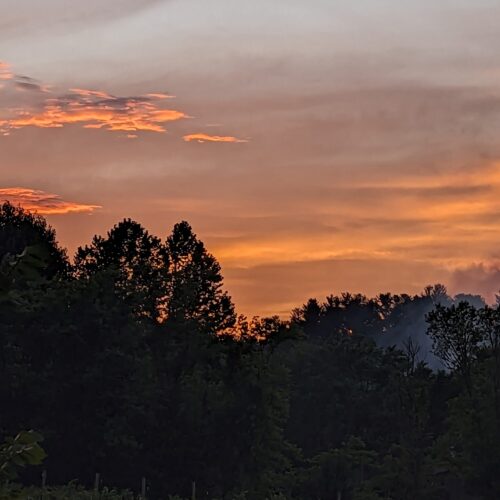
In winter, the advantage goes to the conifer, a plant type well adapted to cold. The narrow leaves (needles) covered with wax keeps the tree from drying out, as do the tiny tracheids. Most hardwoods drop their foliage in preparation for cold winter weather.
Some hardwoods in milder regions keep their foliage through the dormant season. Examples of these include Southern magnolia (Magnolia grandiflora), and American holly (Ilex opaca).
Issues arise when winter lows occur in spring after growth commences. This results in killing of tender growth. This can happen with quite a bit of frequency in the south, and though uncommon in the north, this past spring frosts have occurred in New York and New England. Across Upstate New York, oaks and sourwood flushed out just about the time a frost occurred, killing the new growth!
Wind
“Any way the wind blows, doesn’t really matter to me…” –Bohemian Rhapsody, Song by Queen
Winds can have a negative impact as well, particularly during hot and dry periods, as well as in winter. Winds are drying, and can compound the effects of drought conditions in summer. In winter, when soil temperatures are below 32F, the plant functionally experiences drought conditions. Broad-leaved evergreens such as Rhododendrons, boxwood and hollies as especially susceptible to winter desiccation. The symptom presents as leaf burn.
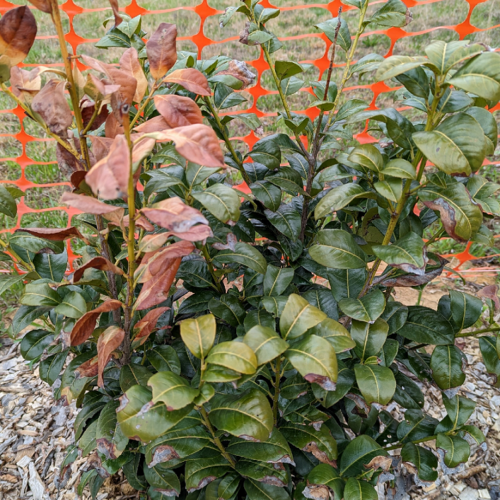
Fog
Species indigenous to rainforests are able to absorb moisture in fog to reduce transpiration and also to rehydrate. Coast redwood (Sequoia sempervirens), Douglas fir (Pseudotsuga menziesii) and ferns take advantage of fog to rehydrate.
Fog, however is not beneficial to all plants, particularly those susceptible to powdery mildew. Powdery mildew is one of the few fungal diseases that does not require a wet surface to germinate, rather it requires high humidity. Numerous plants are susceptible to powdery mildew, though there are several species (of mildew) with a limited host range. Examples of landscape and garden plants susceptible to powdery mildew include crabapple, dogwood, lilac, oak, dahlia, bee balm, rose, blueberry, cucumber and squash.
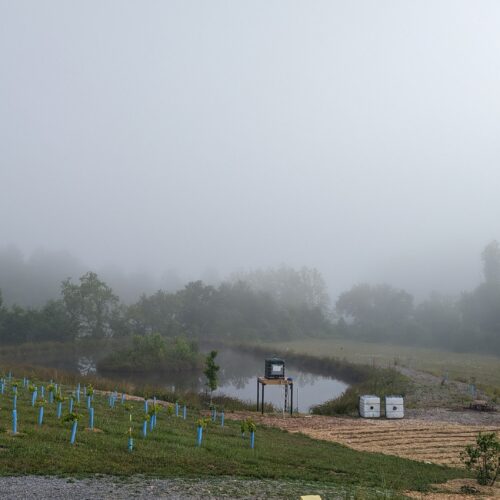
Join us next week when we discuss ways to care for your plants and trees in these difficult weather conditions.
~ Signing off for now, Joe

